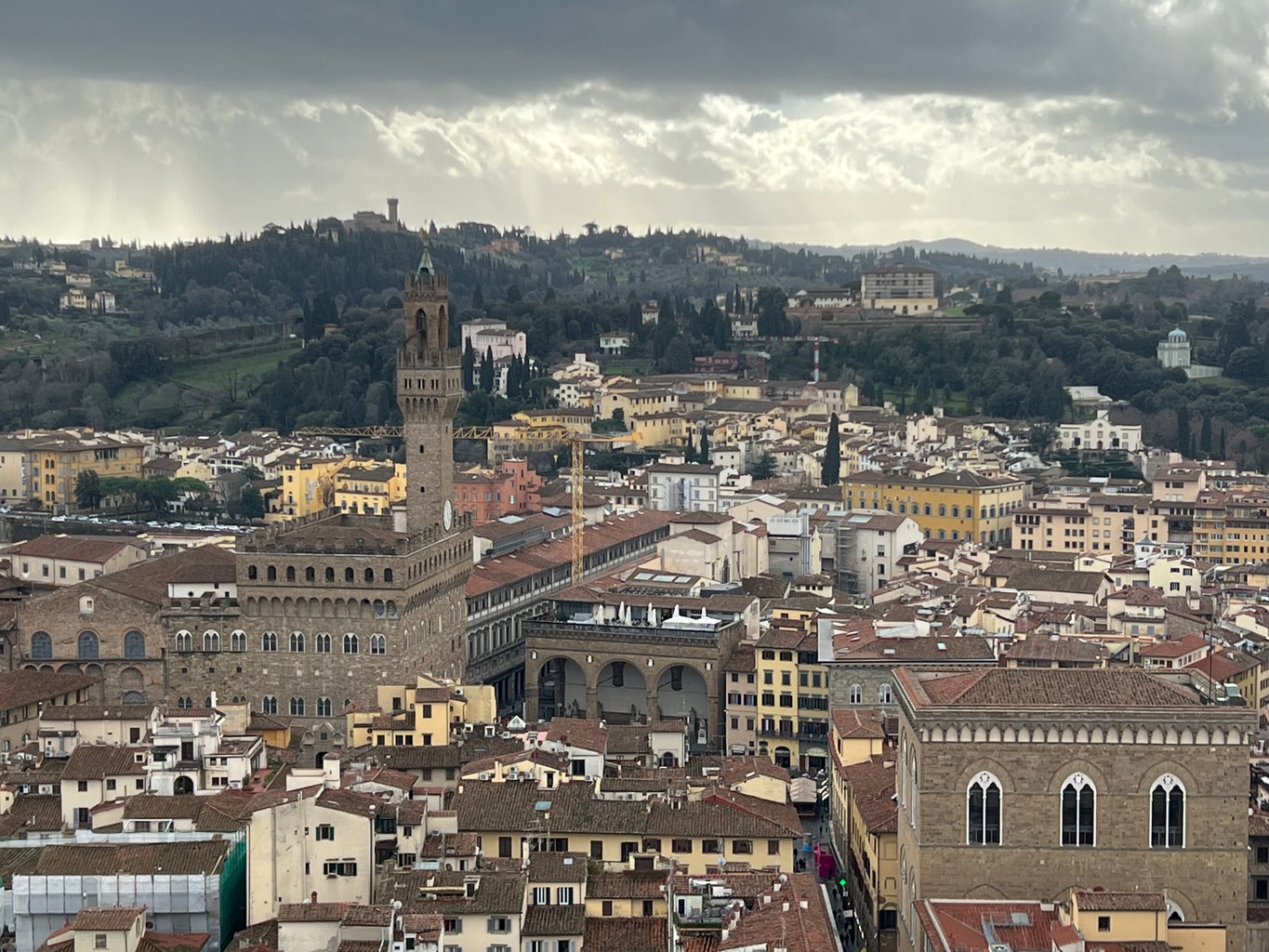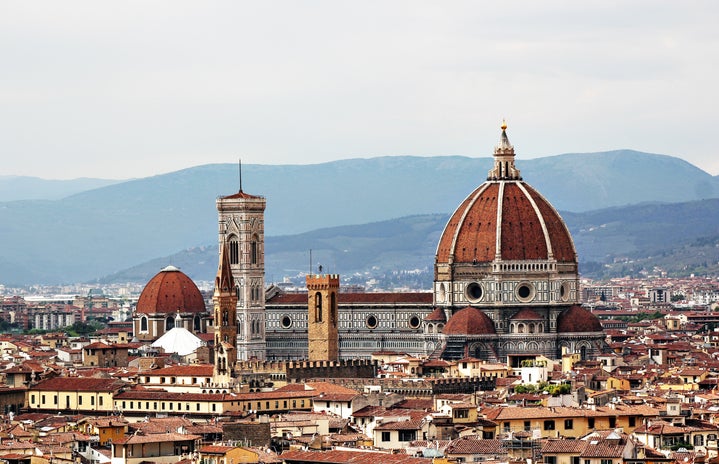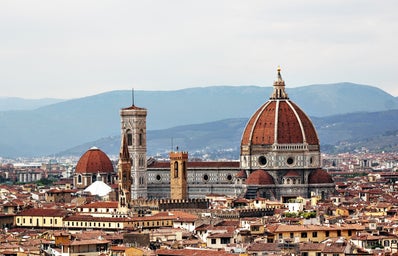Warning: you may experience rapid heartbeat, faintness, and shortness of breath. Often called Stendhal’s syndrome, a psychosomatic condition induced by an overexposure to the beauty of art, these symptoms go by another name: Florence syndrome.
Florence, or Firenze, is known as the birthplace of Renaissance art. Everything from the sculptures that stand on the cobblestone streets to the architecture of the palaces and churches you walk by are proof of this. With each piazza dedicated to the celebration of Florentine art, it can be hard to decide where to start your journey of art appreciation.
Here are some of the best places to nerd-out about art, so instead of being overwhelmed by options, you can be charmed by the beauty of Florentine art (hopefully not to the extent of Florence syndrome, though).
“Uffizi” comes from the word “offices,” referring to the original use of the building when the Medicis commissioned its design by Giorgio Vasari. These two names will chase you throughout Florence, as the art center was built off of the patronage of those such as the Medici and artists like Vasari. It is therefore fitting that this museum—central to Florence’s tourism and containing one of the largest collections of Renaissance art—be built by two of the most influential figures in Florentine and Renaissance history. Seeing the various sites that were commissioned or owned by the Medicis and the repetition of Vasari’s name in wall labels, perhaps it was inevitable.
Nonetheless, The Uffizi should be at or near the top of your list for art immersion experiences in Florence. Its 14th century artwork contains names like Giotto and Filippo Lippi, while its Renaissance artwork breaks out the likes of Botticelli, Rafael, Michelangelo, and Leonardo. I could go on, but rest assured that The Uffizi is not lacking in the big names, with masterpieces so admired even your not so art-nerdy friends might be willing to let you drag them to see.
Even the hallways between galleries bulge with art, while some windows boast views worthy of painting. This is, however, one of the busiest attractions in Florence—one you’ll want to buy tickets for in advance.
Running above Florence’s most beloved bridge, the Ponte Vecchio, the Uffizi is connected to the Medici-purchased Palazzo Pitti by the Vasari Corridor (I told you those names would come up a few times), now closed to the public. However, by walking under this corridor through the jewelry stalls of the Ponte Vecchio, you can reach the Boboli Gardens and five museums within Palazzo Pitti. The most prominent museum within the palace is the Palatine Gallery, home to the largest collection of paintings by Raphael. The museum plays painting tetris as the artworks have been left filling walls from floor to ceiling in rooms furnished as they may have been in the 17th century. As much as this allows a closer proximity to the original times in which the art was made, don’t expect to find much, or any, information on the lesser-known artworks in the collection—wall labels are scarce and name plaques hard to read.
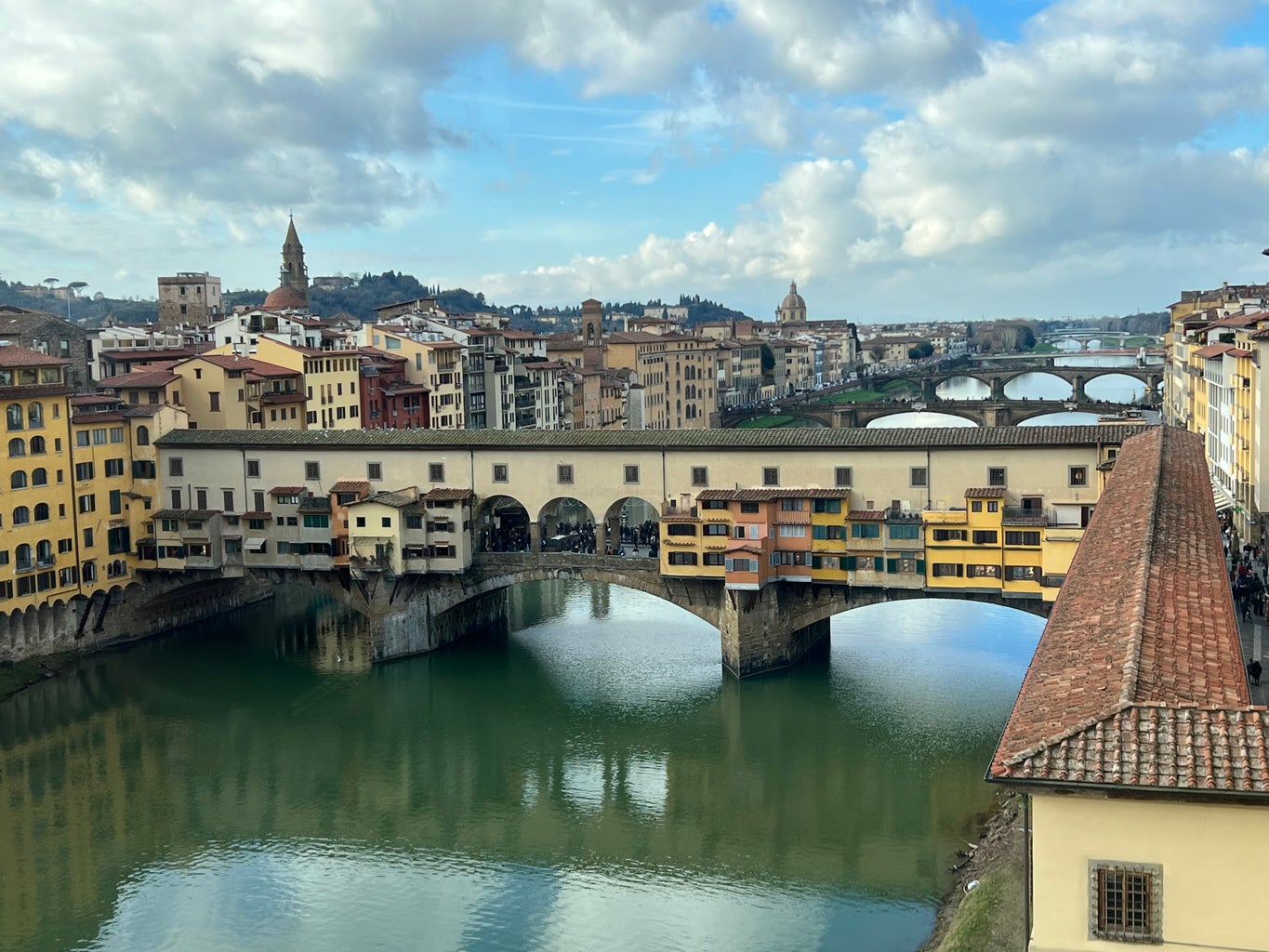
Watching over the earlier rooms of this museum, gallery hosts are often asked “Where’s David?” People go to the Accademia to see one thing: Michelangelo’s larger-than-life marble sculpture named David. The highlight of the museum may be approaching this sculpture through the hallway lined with Michelangelo’s Prisoners—yet to be fully extracted from their stone—but the Gipsoteca brimming with plaster models offers an interesting insight into how marble sculptures were formed.
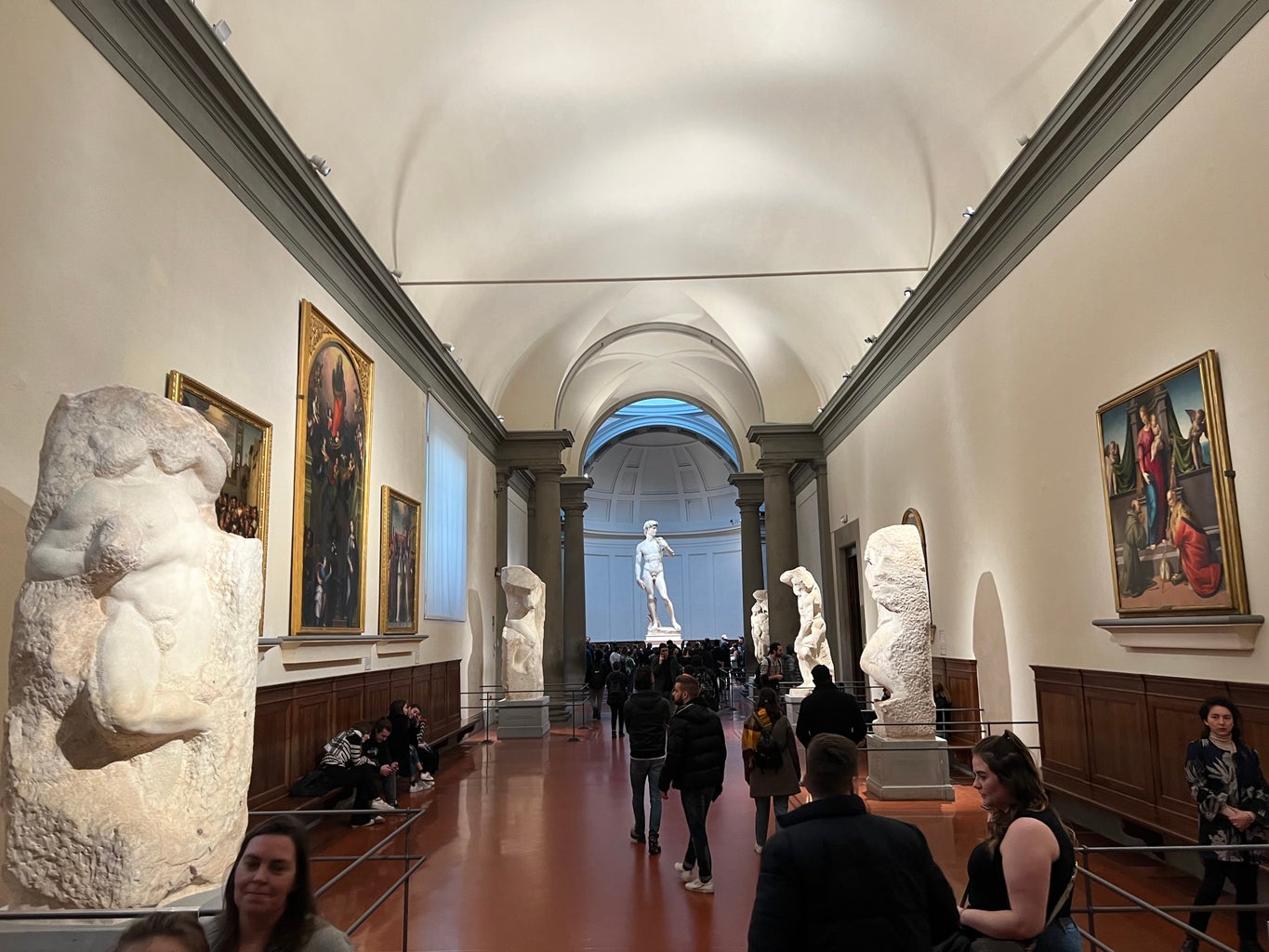
According to travel writer Rick Steves, a tour guide I overheard on the street, and personal experience, the Bargello is an underrated museum. Visitors flock to see Michelangelo’s David in the Accademia, but the smaller, bronze David of Donatello housed in this museum is too often forgotten. This sculpture served to reintroduce the male nude of antiquity that the Renaissance decided it liked very much. Before it was a museum, the Bargello was a prison but with a history much more complicated than that as evidenced by the three centuries worth of coats of arms adorning the courtyard walls. The courtyard, fringed by several sculptures, is a worthy place to sit among art for a while before going to explore the sculptures of 15th and 16th century masters.
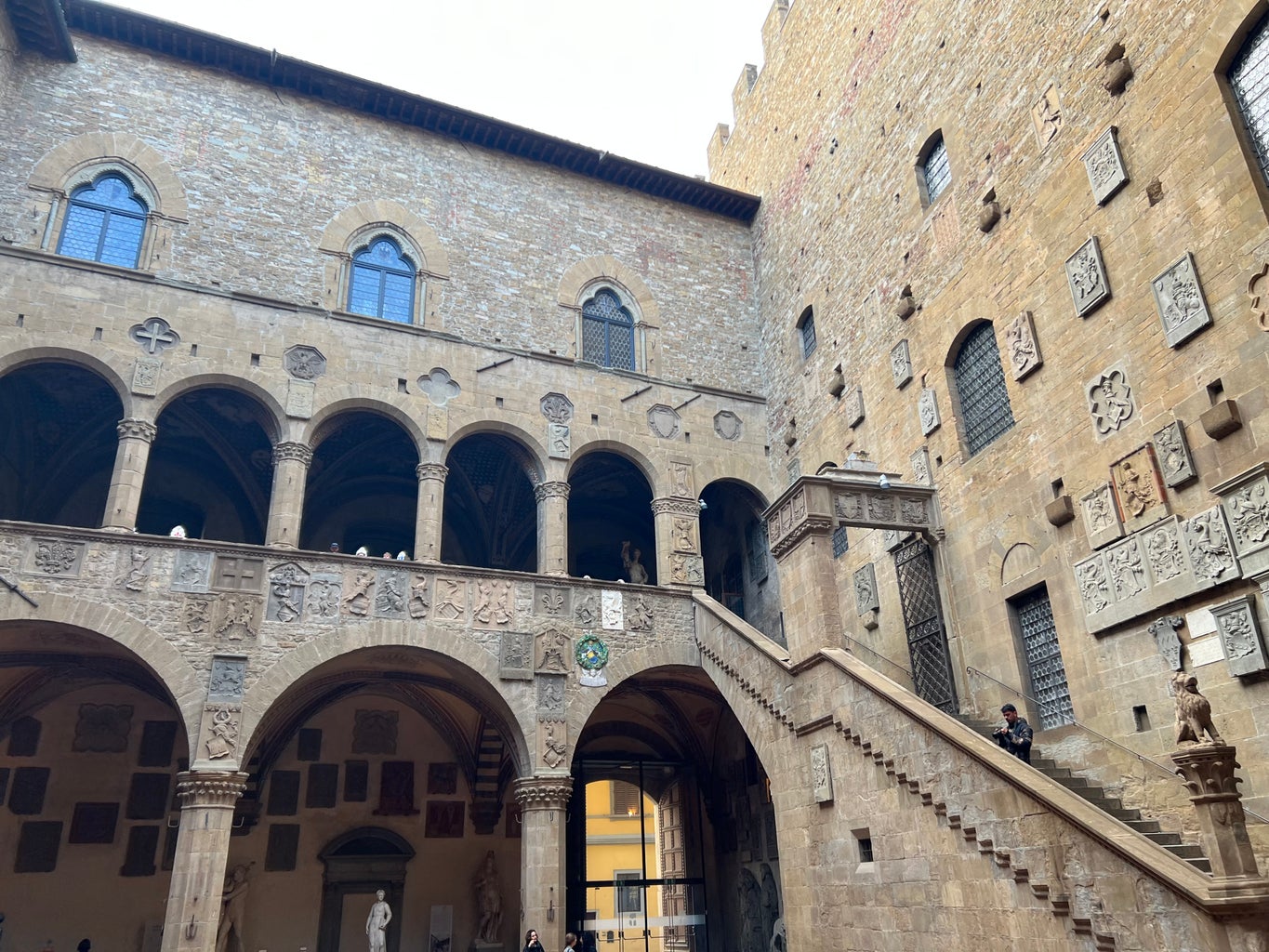
Piazza della Signoria
Here is the only site on this list that you don’t have to pay money to access. This square was once the political center of Florence and still has ties to present-day political happenings. There is no escaping a walk through this Piazza while sitting in front of the Palazzo Vecchio with the Ufizzi just around the corner. Here you can see a copy of Michelangelo’s David where the original once stood and stroll under the covering of the loggia where a selection of statues can be viewed, perhaps most famously Cellini’s Perseus.
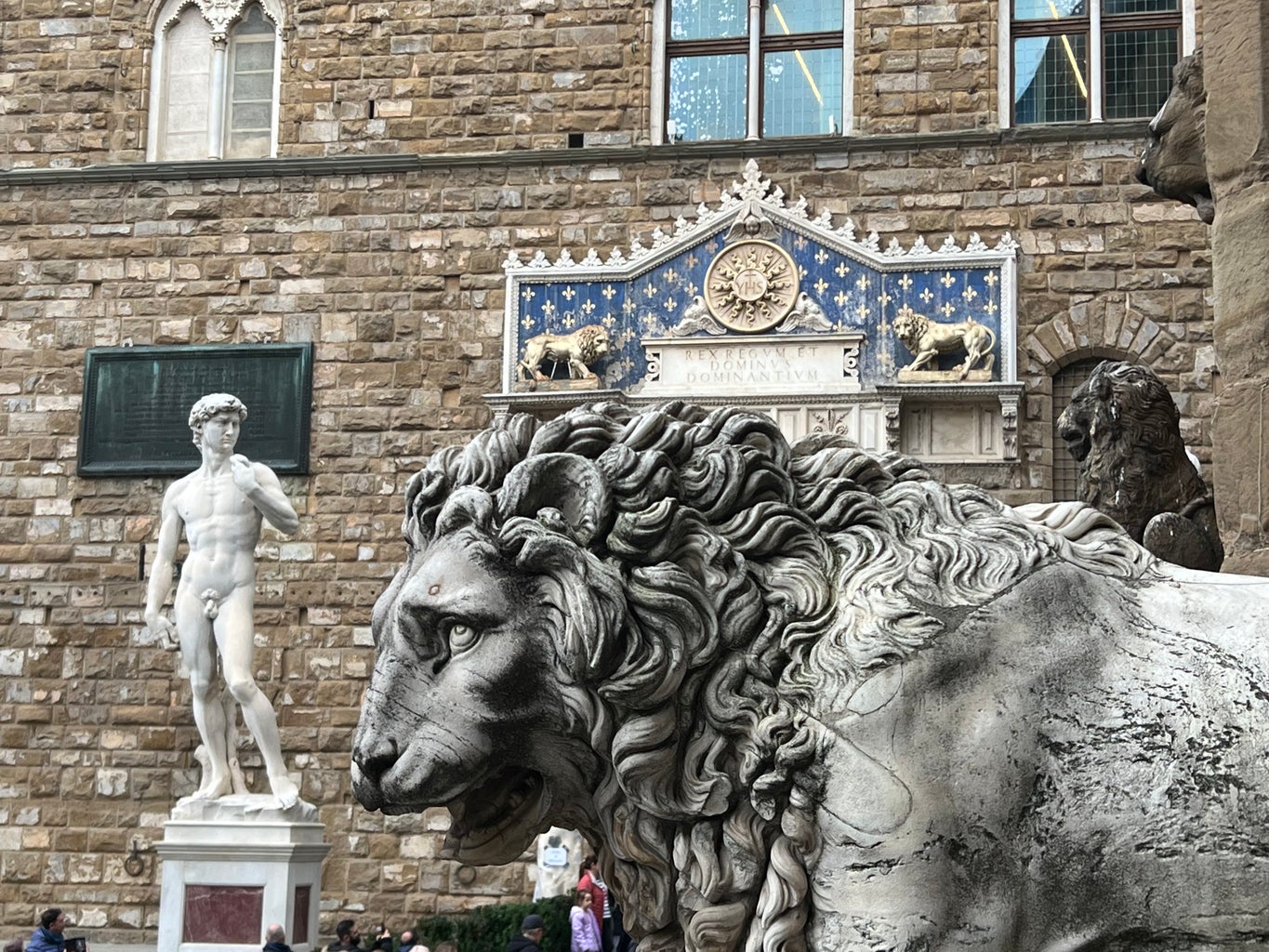
Yet another underrated site in Florence is the Museo di Palazzo Vecchio. You enter the Palazzo Vecchio from the Piazza della Signoria, passing through the column-encircled courtyard (the Italians really know how to do courtyards) and up a set of stairs wide enough for the Rockettes to walk up arm in arm to reach the Great Hall of the 500. This hall is impressive, if not in the style of Vasari’s frescoes that line the walls, then in the scope of their size and detail. Even more intriguing is the now lost works of a competing Leonardo da Vinci and Michelangelo that lie beneath Vasari’s work. Moving upstairs, there are a series of rooms that turn nearly every possible surface into artwork with mythology-inspired frescoes adorning the walls and ceilings, many of them completed by Vasari and his apprentices.
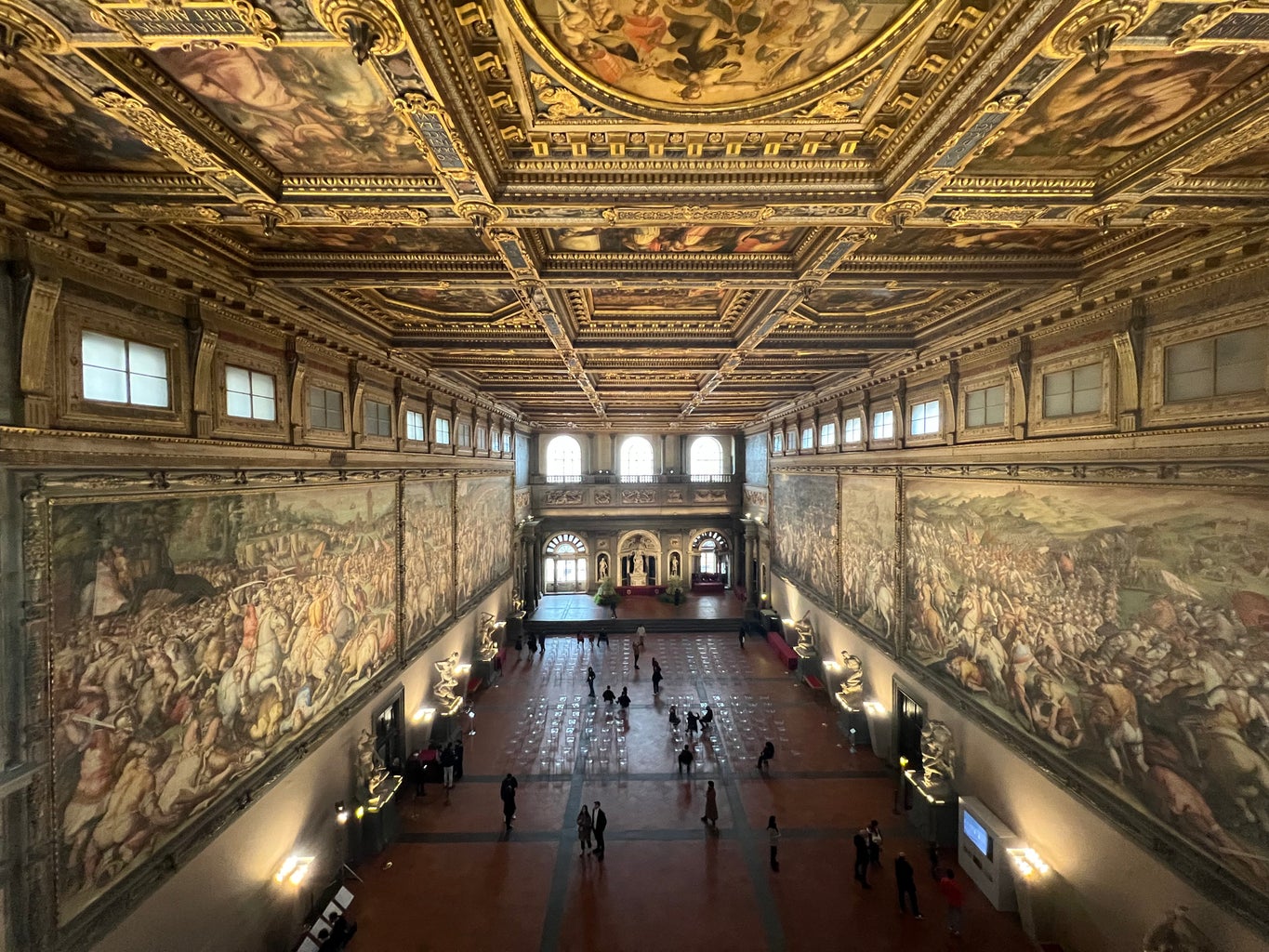
Il Duomo (Cathedral of Santa Maria del Fiore)
To not see Florence’s renowned Duomo would be hard, even if you tried. A walk through Florence of any considerable length will leave you caught up in the color and grandiosity of this architectural marvel.
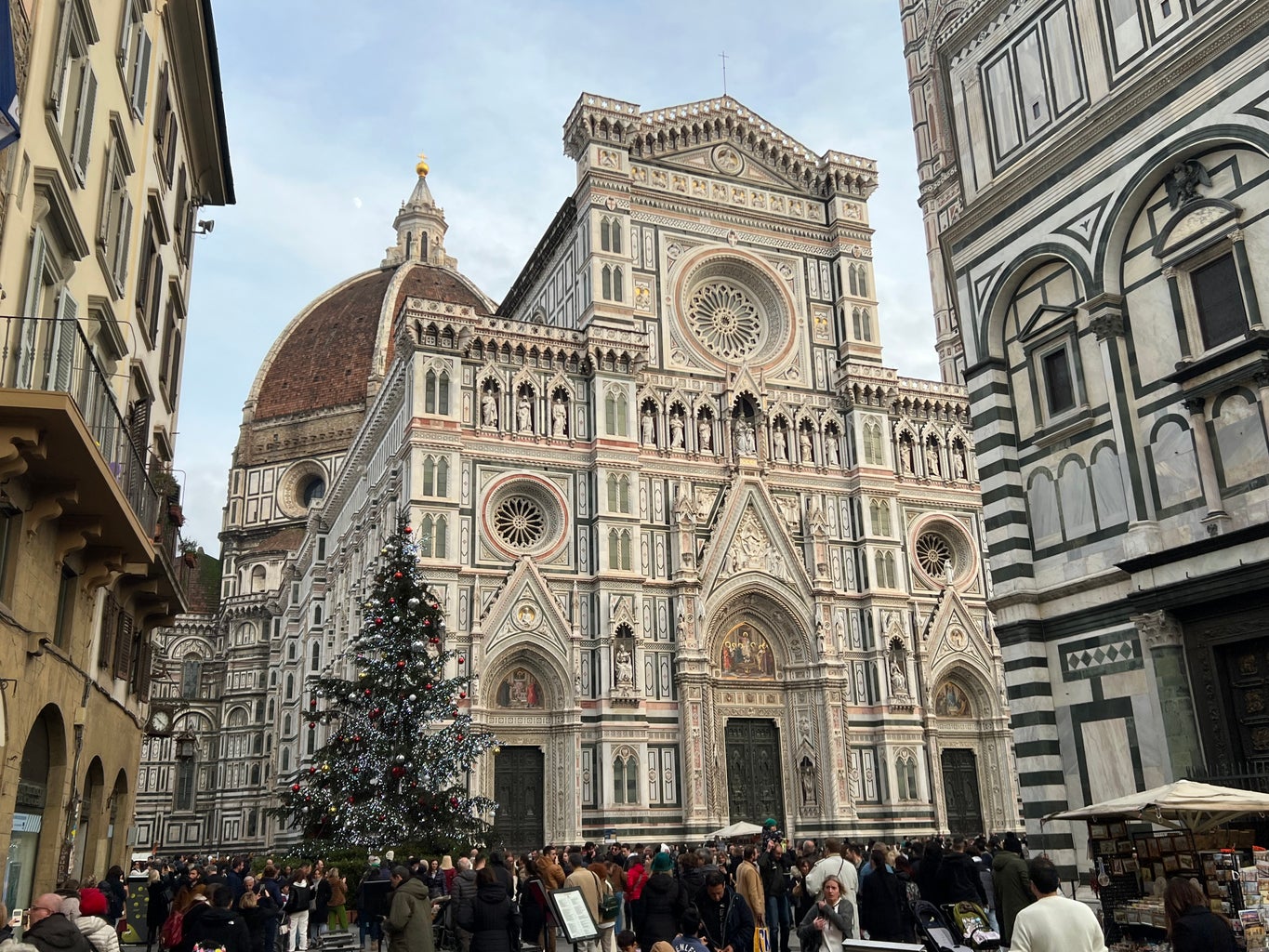
Entrance to the Duomo is free, but purchasing passes gains you access to even more exquisite views and artwork. The Duomo is also a good way to work off all of that gelato (Florence is the birthplace of gelato—you have to indulge). Purchasing the “Giotto Pass” allows you to climb the bell tower. However, this is more breathtaking in the number of steps than in the view. The best view is offered with the “Brunelleschi Pass” which, at an increased cost, allows you to climb the Dome as well. This climb is easier and the view gives a panorama of the city that allows for an appreciation for the architecture and red tile roofs that cannot be felt from the ground. In addition, it allows you to walk around the inside of the dome and see the figures of the fresco painted within it in detail.
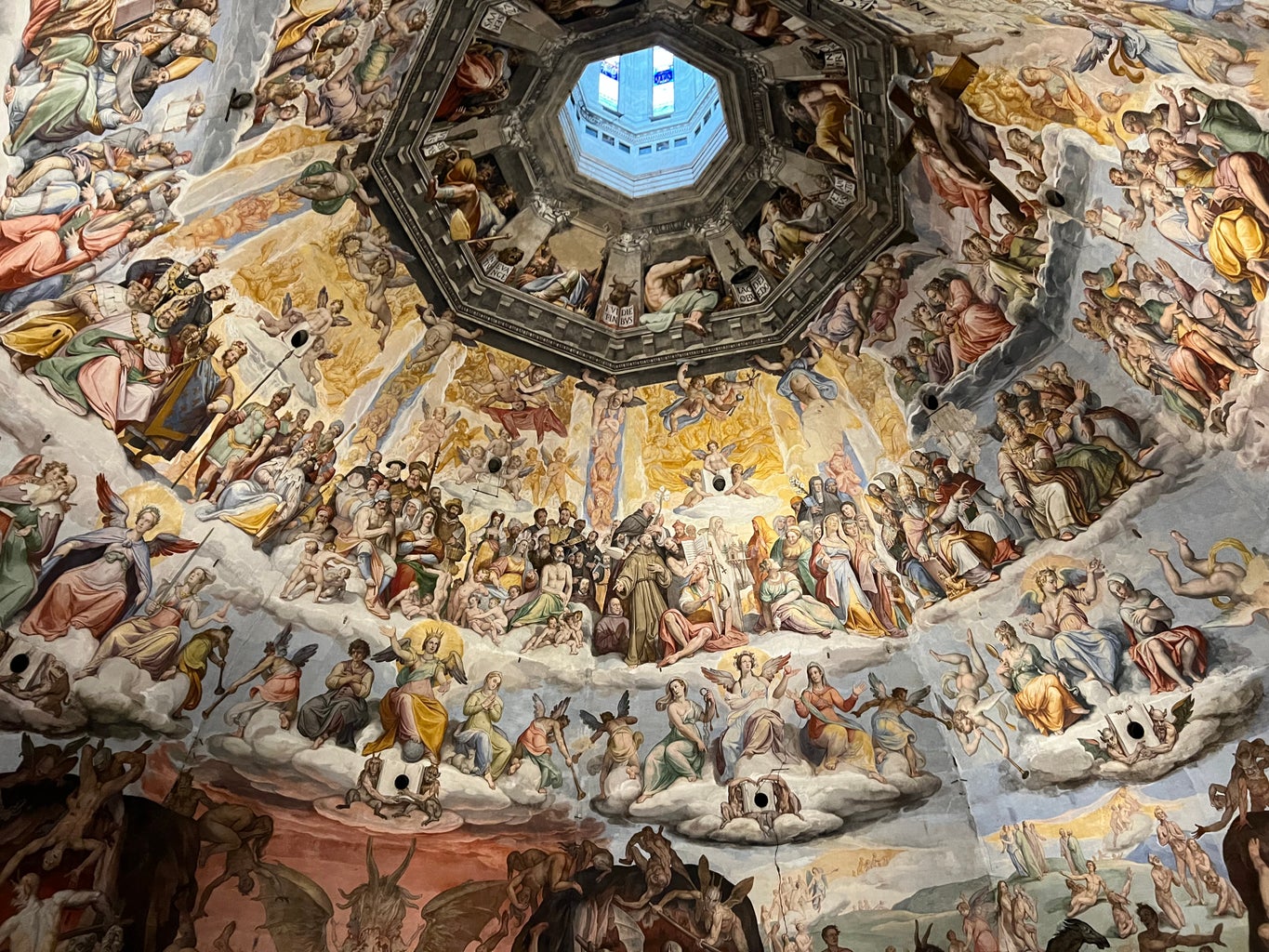
Any pass you buy gets you access to the gilded sheen of the adjacent Baptistry ceiling as well as the Museo dell’ Opera di Santa Maria del Fiore. This museum houses artifacts from the Duomo’s complex that have been removed and replaced with replicas for their protection. One such example is the minute detail of the New Testament stories depicted on the so-called “Doors of Paradise.” However, one of Michelangelo’s final works, a Pietà, and Donatello’s wood-carved Mary Magdalene are also highlights of the collection. This museum seamlessly blends the white-walled modern museum with artworks visible in their historical context.
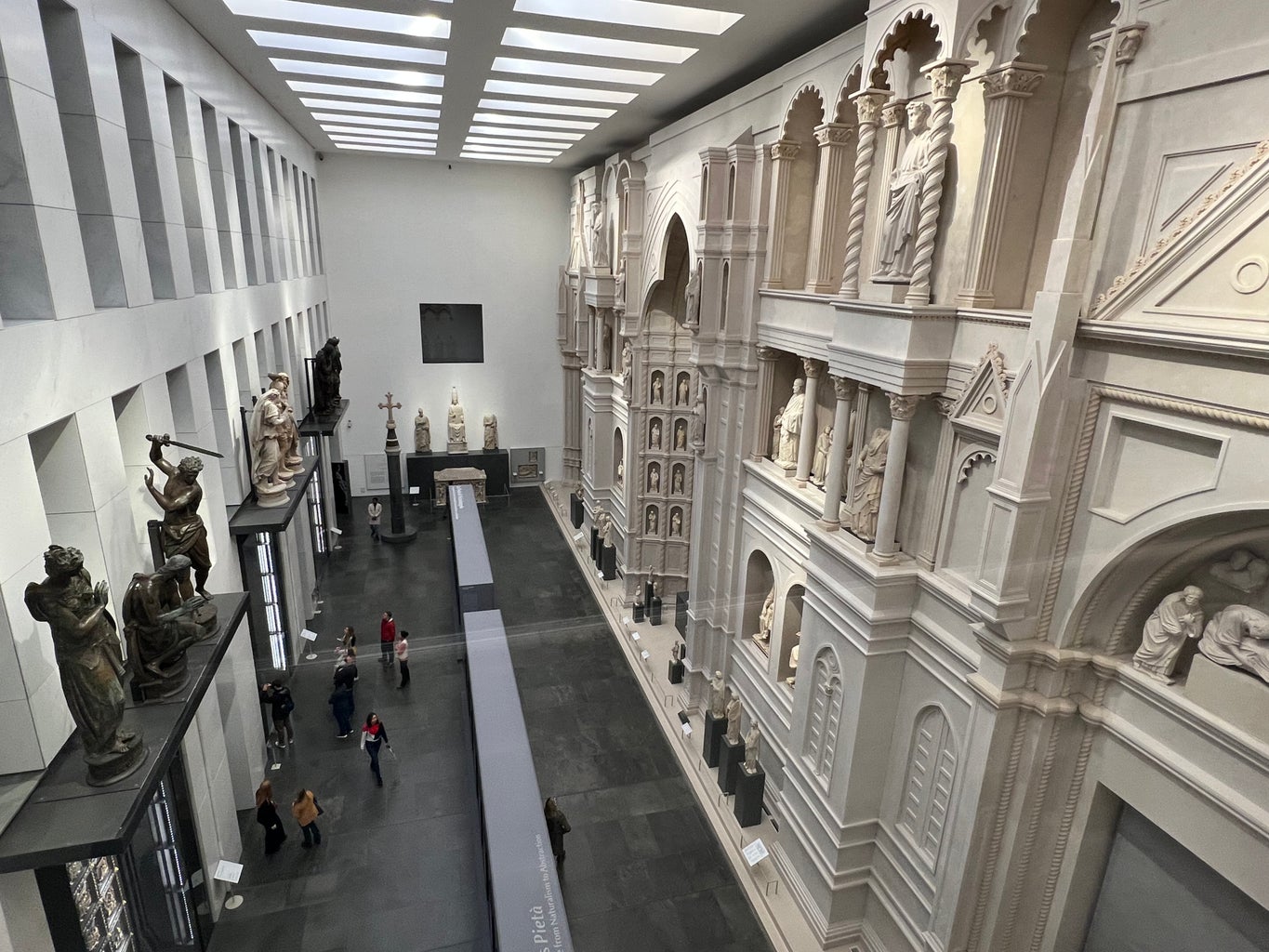
Churches
To say there are many churches in Florence is an understatement. To go beyond this, you can find vibrant frescoes, elegant sculptures, and ornate tombs in many of them. However, most boast one or two really wonderful works by noted masters, and to get into many of them you have to pay. This means that exploring the artwork of various churches around Florence is something you will want to look into beforehand, determining which of these small collections of artwork you’re willing to pay to see.
If this Florence Syndrome-inducing selection of masterpieces isn’t enough for you, Rome, and by extension the collections of Vatican City, is an hour and a half away by high-speed train. Meanwhile, the high-speed train can get you to the canals of Venice in two hours.
However, take some time to enjoy this city that is less a vessel of masterpieces and more is a masterpiece of collaboration between artists across time.
